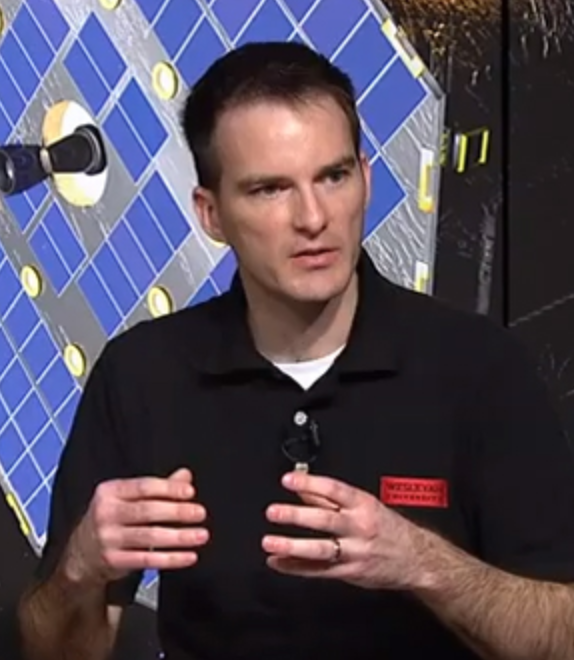NASA’s New Telescope Offers Redfield Opportunity to Expand Exoplanet Research

NASA’s new infrared telescope, which launched on Dec. 25, 2021, will help researchers like Wesleyan’s Seth Redfield explore the universe in ways like never before.
The James Webb Space Telescope (JWST), which is accessible to the worldwide scientific community, offers scientists the ability to explore the solar system, galactic evolution, the early universe, and the formation of stars and planets like never before. The telescope will also observe planets orbiting other stars, known as exoplanets.

Professor of Astronomy Seth Redfield, a member of the JWST’s Transiting Exoplanet Community Early Release Science Program (ERS), will work with scholars from around the world to study the structure of exoplanet atmospheres, transforming our understanding of planets and the origins of life by revealing the atmospheric compositions, structures, and dynamics of transiting exoplanets in unprecedented detail.
“This work provides a clearer understanding of our most immediate cosmic neighborhood and the prospects for life elsewhere in the galaxy,” Redfield said. At Wesleyan, he also serves as director of the College of Integrative Sciences and co-coordinator of the Planetary Science program,
However, obtaining high-precision observations, even for professional astronomers, often comes with unique technical challenges and requires navigating a steep learning curve. For these reasons, the ERS team created a program in 2018 to help accelerate the acquisition and diffusion of technical expertise for transiting exoplanet observations with JWST. This program will also provide a compelling set of representative datasets, which will enable immediate scientific breakthroughs.
“In the early stages of any mission, we need to test out the telescope,” Redfield explained. “The Early Release Science program with JWST is a way to get science-grade observations, while also testing out all the instruments on JWST before starting the originally planned observations.”
With all these new observations and cutting-edge technology, Redfield expects JWST will permit astronomers to observe never-before-seen objects in the universe, thanks to the telescope’s heightened sensitivity at infrared wavelengths of light. And in his own exoplanet research, Redfield hopes JWST will observe smaller and more Earth-like exoplanets, which have traditionally been harder to observe with past telescope capabilities.
Currently, his work focuses on measuring the atmospheric properties of Jupiter-sized planets that typically orbit very close to their stars, better known as “Hot Jupiters.” Redfield also collaborates with master’s student Katie Bennett to look at atmospheric evaporation for this type of exoplanet. Studying these atmospheres can offer clues about the geological and biological histories of the planets they surround. But the ability to observe exoplanets more similar to Earth may hold answers about the existence of life on our planet and its potential to exist elsewhere in the universe.
“The search for life elsewhere in the Universe is the biggest scientific question of our time,” Redfield said. “We are at a point where it is possible to make such a discovery, based on the imprint that life would have on the planet’s atmosphere. This comes at a time when we are painfully aware of the impact humans have on our own planet and atmosphere. Not only would it be a monumental scientific discovery, but I hope it would be a powerful shift in our thinking as we understand the emergence of life in the universe.”
While no one yet knows what JWST will discover, the observations it will make are a major step forward in the search for life beyond Earth.
“All of the important molecules important in biospheres have signatures at infrared wavelengths, where JWST will be looking (molecules like oxygen, ozone, methane, ammonia, etc.),” Redfield elaborated. “JWST’s sensitivity will make it possible that we can measure the atmospheres of terrestrial, Earth-like planets. It will be hard, but it is possible.”

